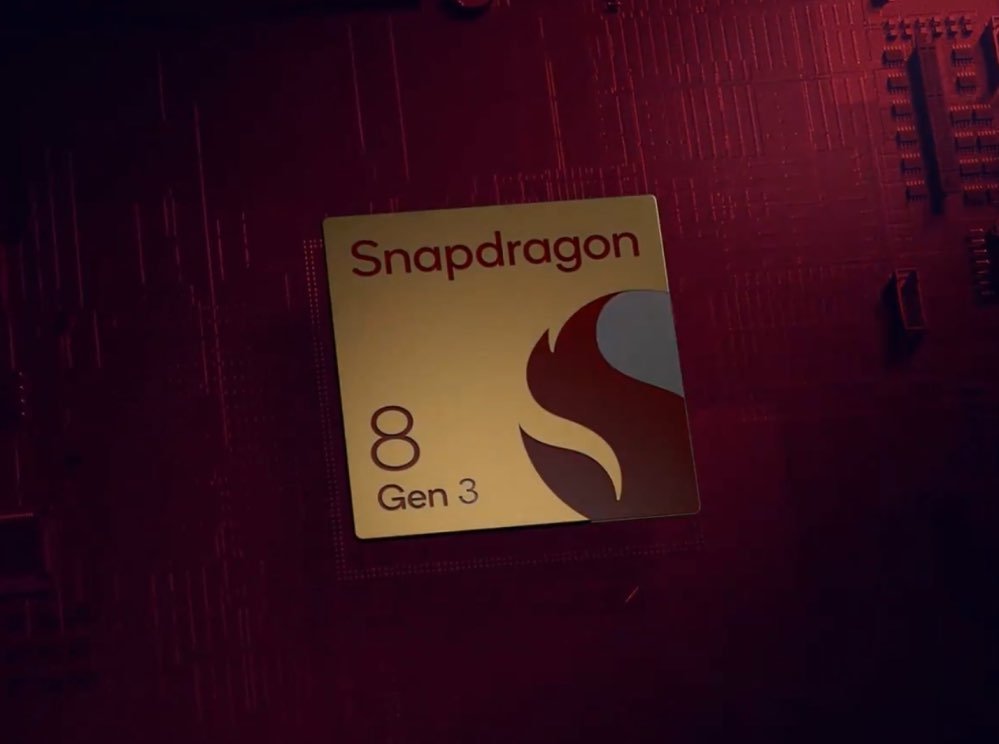Samsung in the recent Galaxy unpacked event released Galaxy S24 series, Samsung has announced its new flagship mobile chipset, Exynos 2400, after a gap of two years. This chipset is going to power the standard Galaxy S24 and the Galaxy S24+ in most regions around the world, other than the U.S. and Canada. However, the Biggest flagship , Galaxy S24 Ultra will include the Snapdragon 8 Gen 3 chipset in all markets. But what is the difference between the Exynos 2400 and Snapdragon 8 Gen 3 chipset? Do both processors perform similarly? To find the answer, we have compared the Exynos 2400 vs Snapdragon 8 Gen 3 here. So, without wasting any time, let’s jump in

Exynos 2400 vs Snapdragon 8 Gen 3: Specs Comparison
Here is the some main specs comparison between Exynos 2400 and Snapdragon 8 Gen 3. You can take a look to understand the difference between both
| Exynos 2400 | Snapdragon 8 Gen 3 | |
| CPU | 10-core CPU | 8-core, Kryo CPU |
| CPU Cores | 1x 3.2GHz (Cortex-X4)2x 2.9GHz (Cortex-A720)3x 2.6GHz (Cortex-A720)4x 2.0GHz (Cortex-A520) | 1x 3.3GHz (Cortex-X4)3x 3.2GHz (Cortex-A720)2x 3.0GHz (Cortex-A720)2x 2.3GHz (Cortex-A520) |
| Process Technology | Samsung’s 4nm LPP+ | TSMC’s 4nm process |
| GPU | Xclipse 940 GPU based on AMD RDNA 3 architecture, 6-core | New Adreno GPU 750 |
| Memory/Storage Support | LPDDR5X / UFS 4.0 | LPDDR5X / UFS 4.0 |
| Machine Learning and AI | New AI Engine | New Hexagon AI Engine |
| Camera Capability | Up to 320MP in single-camera modeDual-camera 64MP+32MP at 30FPS | Up to 200MP in single camera modeDual-camera 64MP+36MP at 30FPS |
| Video Capability | 8K @ 30FPSHDR, HDR10+, and HLG | 8K @ 30FPSHLG, Dolby Vision, HDR10, HDR10+, Google Ultra HDR |
| Modem | 5G modemup to 12.1Gbps Peak Downloadup to 3.67Gbps Peak Upload | Snapdragon X75 5G modemup to 10Gbps Peak Downloadup to 3.5Gbps Peak Upload |
| Wi-Fi Support | Wi-Fi 6E | Wi-Fi 7 |
| Bluetooth | Bluetooth 5.3, LE Audio | Bluetooth 5.4, LE Audio, Dual Bluetooth Antenna, aptX Lossless |
| Others | AV1 Codec Support | AV1 Codec SupportNavIC SupportSnapdragon Seamless |
This table provides a side-by-side comparison of various features for the Exynos 2400 and Snapdragon 8 Gen 3, including CPU details, process technology, GPU, memory/storage support, machine learning and AI capabilities, camera specifications, video capabilities, modem specifications, Wi-Fi support, Bluetooth features, and other notable features.

Exynos 2400 vs Snapdragon 8 Gen 3: CPU
Let’s look up the CPU comparison between the Exynos 2400 and Snapdragon 8 Gen 3. The Exynos 2400 has been developed by Samsung Semiconductor and built on the improved 4nm LPP+ process technology. This is the third generation of Samsung’s 4nm process node and it’s being told that the 4nm LPP+ fabrication process is finally on par with TSMC’s 4nm process node.
This time around, Samsung has gone with a deca-core CPU on the Exynos 2400, meaning it has 10 CPU cores, which is something we don’t see on mobile SoCs often. It has packed all the latest ARM cores in it. The Exynos 2400 CPU has a tri-cluster design with 1x Cortex-X4 prime core clocked at 3.2GHz, 2x Cortex-A720 cores clocked at 2.90GHz, 3x Cortex-A720 cores again clocked slightly below at 2.60GHz, and finally 4x Cortex-A520 small cores clocked at 2.0GHz.

Over to Snapdragon 8 Gen 3, it has been developed on TSMC’s proven 4nm process node. Unlike Samsung’s 10-core CPU, Qualcomm has stuck to its traditional octa-core design with eight Kryo cores. The CPU includes a single Cortex-X4 prime core clocked at 3.3GHz, 3x Cortex-A720 cores clocked at 3.2GHz, 2x Cortex-A720 clocked at 3.0GHz, and 2x Cortex-A520 cores clocked at 2.3GHz.From the core configuration, you can see that Qualcomm has been able to increase the clock speed up to 3.3GHz (100MHz higher than Exynos’ peak frequency). For A720 cores as well, Qualcomm has elevated the clock speed from 300MHz to 400MHz. And the same goes for the little A520 cores as well. It means that the 8 Gen 3’s CPU should be more powerful than the Exynos 2400’s CPU.
If we look at the leaked Geekbench 6 scores, the performance difference becomes apparent. In the Geekbench 6 benchmark, the Exynos 2400 scored 2,193 in the single-core test and 6,895 in the multi-core test. In contrast, the S24 Ultra running on the Snapdragon 8 Gen 3 scored 2,297 in the single-core test and 7,104 in the multi-core test.

The performance difference seems to be small, which means Samsung has done a great job with the Exynos 2400. It’s no longer a one-sided dominant. And this time Samsung exynos has much more better.
Samsung has used a new Fan-Out Wafer-Level Packaging (FOWLP) method on the Exynos 2400 SoC for improved thermal management. Overall, I would say that despite packing a larger 10-core CPU, Samsung has not beaten Qualcomm just yet. However, it has come up with a promising chipset that is very close to the Snapdragon 8 Gen 3, and that’s a notable upgrade in my experience please Samsung let’s keep this up and make more powerful processors .
Exynos 2400 vs Snapdragon 8 Gen 3: GPU
According to Samsung, the Xclipse 940 GPU on the Exynos 2400 is the highlight of the chipset. It’s based on AMD RDNA 3 architecture and has six GPU cores. It brings hardware-accelerated ray tracing support, just like the Adreno 750 GPU on the SD 8 Gen 3.
HW-accelerated ray tracing can make gaming even more immersive, bringing lights, reflections, and shadows for a vivid gaming experience.

Samsung says that the Xclipse 940 GPU is 70% faster than the older Xclipse 920 GPU which is a huge improvement. Not just that, the GPU can also handle QHD+ screens at 144HZ and 4K screens at 120Hz.On the other hand, Qualcomm has one of the best GPUs in the smartphone world. It even outclasses Apple’s latest A-series chipset. The Adreno 750 GPU on the Snapdragon 8 Gen 3 is a powerhouse, both in terms of performance and efficiency. It’s much better at HW-accelerated ray tracing, thanks to Global Illumination support. Apart from that, it can upscale gaming scenes up to 4K and it even supports Unreal Engine 5.2.
While the new Xclipse 940 GPU on the Exynos 2400 seems fine on paper, we need to wait for more tests, including its performance in gaming tests and synthetic benchmark tests (we are working on it, coming soon). Following that, we will give our final verdict as to where the Exynos 2400 stands against the Adreno 750 GPU on the Snapdragon 8 Gen 3.
Exynos 2400 vs Snapdragon 8 Gen 3: NPU
Samsung has again outdone itself in the NPU department. It has built a new AI engine for the Exynos 2400, which is 14.7x faster than the last-generation NPU on the Exynos 2200. That’s a massive improvement in two years. It features 2-GNPU and 2-SNPU, and collectively, the NPU can perform 17,000 MAC (Multiply-Accumulate) operations. Samsung has not given any TOPS number for its NPU, The NPU is powerful enough for on-device AI tasks like image generation, real-time translation, object recognition, AI-powered generative fill, and more. That’s perhaps why Samsung says that all AI features will be available across Snapdragon and Exynos variants of the S24 series.Coming to the AI Engine on the SD 8 Gen 3, it has a powerful Hexagon NPU that can perform on-device AI tasks, including running a model locally — from 3B to 10B models. It can also generate images locally in 1 second, perform real-time translation, process multi-modal data, and perform semantic segmentation. The Hexagon AI Engine can perform 45 TOPS and generate up to 20 tokens per second, which is quite fast for a mobile SoC.

Qualcomm has been one of the leaders in AI mobile computing, but now, we have to see how much Samsung has closed the gap with its much-improved NPU on the Exynos 2400. Stay tuned with us as we bring you AI benchmark results from the Exynos 2400.
Exynos 2400 vs Snapdragon 8 Gen 3: ISP
As for imaging capabilities, the Exynos 2400 has a capable ISP, and it supports image sensors up to 320MP. It can capture images up to 320MP in the single-camera mode. Next, the ISP can take a ZSL shot (zero-shutter lag) up to 108MP at 30FPS.It also supports ZSL dual-camera mode with 64MP and 32MP resolution. As for video capability, it supports 8K video recording at 30FPS with VP9 codec.Qualcomm has a powerful Spectra ISP on the Snapdragon 8 Gen 3, built on Cognitive and triple-ISP architecture.
It can capture images up to 200MP in the single-camera mode and up to 108MP with ZSL. The ISP also supports ZSL dual-camera mode up to 64MP and 36MP resolution. And similar to the ISP on the Exynos 2400, SD8Gen3 can record 8K videos at 30FPS.Overall, the on-paper specs of both ISPs are quite powerful and evenly matched. Samsung has really developed a powerful ISP for the Exynos 2400, making the chipset an all-around package.
Exynos 2400 vs Snapdragon 8 Gen 3: Connectivity
Surprisingly, Samsung has baked a capable 5G modem into its Exynos 2400 chipset. This modem can deliver download speeds up to 12.1 Gbps and upload speeds up to 3.67 Gbps while using mmWave 5G bands. And with the sub-6GHz 5G bands, the download speed can go up to 9.64 Gbps and the upload speed can deliver up to 2.55 Gbps.
Besides 5G connectivity, the Exynos 2400 brings support for Bluetooth 5.3, Wi-Fi 6E, and AV1 codec support.On the other hand, the Snapdragon 8 Gen 3 packs the X75 5G modem that offers peak download speeds up to 10 Gbps and upload speeds up to 3.5 Gbps. You get support for Wi-Fi 7, Bluetooth 5.4, and AV1 encoding and decoding support as well.

Conclusion
In summary, the Exynos 2400 and Snapdragon 8 Gen 3 exhibit competitive specifications, with minor performance differences in CPU and GPU. Real-world testing, gaming performance, and benchmark results will provide a clearer picture of their overall capabilities. Samsung’s improvements, especially in the NPU and GPU departments, signal a promising step forward in the Exynos lineup.

